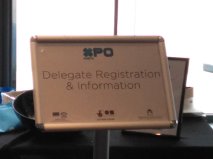Arranging a meeting to talk about future projects, little did I think that June 24th would be a problem. I don’t think we expected to be in such a disappointed, sad and uncomprehending mood – it can be hard not to be negative in the face of such a result. Despite the disappointments of the referendum result, we agreed to meet regardless – and actually some really positive things came out of it which is comforting and gives hope for the future.
Since meeting my mentor Susan in October last year, I have informally been guided and supported by her – often asking for advice on funding for example, or proposals and ideas for future projects.
Deciding to apply for and then be awarded the professional development bursary and formalise this mentoring relationship, we have had a number of conversations exploring how this could work. We have maintained our regular conversations and ad hoc assistance which works well, fitting this in around the demands of work, life and other projects. However, to have a programme and defined outcomes and expectations is important and having the resource to do this is beneficial in two ways: recognising the value of the level of support provided and reinforces the importance of giving this area of development opportunity.
It is interesting to note also how mentoring should not be seen as a one way relationship – there is such opportunity for both parties to learn and develop. As an example, we were chatting through marketing and social media strategies, website provision and how this can be used efficiently and effectively. This is an area I feel I can better contribute to (despite not being a digital native) as I have good experience and am interested in this area. Being able to contribute in some way through the passing on of knowledge is really affirming – creating a good balance in the relationship, and mutual respect. I am aware my experience in many other areas is much less, but by simply being able to pitch in at one level or on one thing feels good.
We’ll continue to have this kind of relationship but it will be interspersed with more formal aspects – I have asked Susan to specifically look at teaching me better skills in budgeting for proposals and writing proposals. Budgeting skills for applications and proposals is a key area which if you get right can have a tremendous effect overall. This area encompasses a greater understanding of how projects run and the resource really needed for different activities – having a better insight to this is essential. Written proposals and the development of ideas through writing is an area I don’t excel in and I’ll be looking to develop this through practical understanding and studying how to convey ideas together.
So far, this support has been particularly helpful in recent projects. The next big thing I have coming up is an exchange residency I will run locally. I received funding to complete this project which will get 6 artists together for one week to work collaboratively to explore notions of rural and urban identity and networking and collaboration in those environments. There will be a number of events within the scope of the week – artists presentations, round-table discussion and a closing presentation event. The presentations will give the artists, who are mainly emerging and locally based, a platform to present themselves and their work to the public. The round-table discussions will focus on the themes of the residency and encourage a wider discussion. The closing event will show the product of the time spent together – this may just be a presentation or show, it very much depends on how we work together for the week and it is exciting to imagine what may come out of it.
From the beginning of this project, Susan has been on hand to read over proposals and critically discuss how this could work in practice. Having this kind of support on a project like this is invaluable, and makes me confident in achieving its aims.
I also got the chance to discuss the project with the administrator of the funding bursary, Kirsten Body – being able to approach and take advantage of assistance in running this kind of project is so important, Kirsten has been so generous with her time and has a wealth of experience to draw from. Sometimes it is easy to forge on ahead without the input of others – this may work in some situations but I prefer to work collaboratively and gain insight from other practitioners. This may sound as if a lack of confidence is at the root, but I don’t see it in this way at all – being able to ask for help and including others makes for a stronger result.













